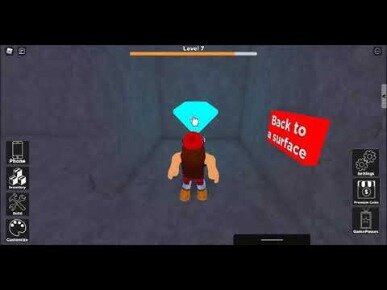Content
If you want to estimate how much Bitcoin you could mine with your mining rig’s hash rate, the site Cryptocompare offers a helpful calculator. A common misconception prevails that all cryptocurrencies reward the miners with a similar amount of money, which is not true. Within this concept, the probability of one mining a block is based on the amount of computational work he has done. Or, to put it in modern terms, invest in the companies that manufacture those pickaxes. By agreeing you accept the use of cookies in accordance with our cookie policy. Remember that electricity consumption for Bitcoin mining has quadrupled over the last year.

For most players in bitcoin mining, this is on the order of months and depends on their proximity and relationships with the producers of mining gear. It is also possible our market average assumed electricity cost of ¢5/kWh could be too high. Or perhaps our cooling cost assumptions are too high? While we can speculate about this, that is also ultimately all we can do. For reference, we estimate that the opex component of this all-in cost is exactly 50% of the total (at an 18-month depreciation schedule). That means the market-average cash cost at our assumptions is approximately $3,400. In our latest report, under the same exact assumptions, we estimate the creation cost to now be approximately $6,800, an increase of $300.
One percentile of all the global energy consumption is just used by the bitcoin miners. Energy and national resources had submitted a written report mentioning this fact in front of the US senate committee in 2018.
Average Time Is 10 Minutes
Rather, it must be accounted in terms of some participation cost demonstrating the commitment of computational power. In the words of Satoshi Nakamoto, “one CPU one vote” . Bitcoin mining hardware has moved from CPU first to GPU (McNally et al., 2018) and later FPGA and ASIC but the principle behind the proof of work remains the same. By considering these factors, miners stand a better chance of mining bitcoin profitably. It is also essential to note that many Asian and South American countries have lower power consumption rates. For instance, it costs ten times more to mine one bitcoin in the USA than in Venezuela.
This requires either huge investments in mining equipment or other methods to control the mining farms, such as through a cyber or a conventional physical attack, which will also cost considerable amount of money. Therefore, we expect the parameter p to be of the order of 1% or less. Bitcoin miners are responsible for securing and keeping the global bitcoin ledger system rigid and updated. It then goes through a broadcasting and verification process on the network. As a result of providing their valuable hashing power to the network, the miners gain a reward. However, these figures taken from a Digiconomist study -a website dedicated to Bitcoin- seem to be somewhat flawed. The studies were made based on the revenue made by bitcoin miners.
Given that the most recent CPUs added will be more efficient than the older CPUs implies that the number of mining CPUs is growing faster than electricity consumption, possibly much faster. As such, if small scale mining is profitable now, it will become less so in future unless CPU efficiency grows in line with mining difficulty . Inevitably therefore one needs to ensure that electricity costs are as low as possible to ensure mining stays profitable. However, even if domestic mining of bitcoin is profitable now one thing is for sure.
How Much Does It Cost To Mine One Bitcoin?
And that evolution in hardware can have a huge impact on the amount of power used. One of the points of bitcoin is that the cost of successive bitcoins increases steadily. How do I maximize my chances of guessing the target hash before anyone else does?
The last Bitcoin is predicted to be mined in the year 2140. This means the time taken to mine one Bitcoin will only ever increase over the years. You can’t win a whole Bitcoin in a mining pool in one day. But you can mine fractions of it and build up one Bitcoin over time. An individual miner now has roughly 1 in a million chance of discovering and solving a block.
- These mining collectives allow you to combine your resources with other miners and receive regular rewards based on how much mining power you contribute.
- Without the miners, these Bitcoins would not be added as currency.
- But with the price of Bitcoin increasing almost daily, the potential payoff is growing higher as well.
- There are still about 3 million Bitcoins left to mine.
- There are a number of cloud mining companies who rent out Hash Power in their facilities so you can mine without buying expensive equipment.
An efficient bitcoin miner running 24/7/365 will consume as much power as 4 average sized family households consume in a year. An older less efficient miner will consume as much electricity as almost 10 households. Given such a prolific use of electricity, price per kWh paid becomes a critical consideration. It is said that bitcoin mining is responsible for almost 1% of global energy consumption.
It can be extremely expensive to mine coins, so make sure you look into the costs before going ahead. Bitcoin miners are responsible for validating transactions and ensuring the security of the Bitcoin network, and miners are rewarded with BTC for their efforts. However, if you want to make a profit mining Bitcoin, you’ll need access to some specialised hardware. The ledger itself is stored throughout the entire network and to update one is to update them all. Mining pools are comparable to those Powerball clubs whose members buy lottery tickets en masse and agree to share any winnings. Well, before you invest the time and equipment, read this explainer to see whether mining is really for you. A first generation gamer at heart and tech buff by nature, have been involved in the tech sector for better part of a decade.
Why Does Bitcoin Use So Much Electricity?
With advertising revenue increasingly hard to come by due to the dominance of Google and the increased use of ad-blockers, mining could provide an alternative revenue stream. “Its profits are very low but the number of apps that are looking to use this is alarming and Google Play doesn’t have any real process , so nothing stops them from embedding some kind of miner in there.” The site had given no notice, nor offered any opt-out for the mining script. “That was until this autumn when JavaScript mining platforms emerged – they chose Monero coins, whose mining algorithm had comparable performance even on client computers.” However, in the few weeks since the technology for mining currency in browser windows has been released, researchers have seen a surge in abuse – both on websites and in Android apps. Amid a dramatic, volatile increase in the value of virtual currencies such as Bitcoin and Monero, mining them is an increasingly tempting source of income. So much so that a new set of JavaScript-based mining tools designed to help websites legitimately earn money from their visitors are being subverted to steal CPU cycles on the quiet.
Is Bitcoin mining profitable in 2020?
Bitcoin mining profits have been rock bottom in 2020. For much of the year, the cryptocurrency has been less profitable to mine than ever. And that’s because Bitcoin’s collective hashrate – or how much computing power is pulsing through the network – has surged to consecutive all-time highs this year.
Our service is accredited by the Ofgem Confidence Code, is and always will be free. Economy 7 tariffs offer cheaper night rates but usually charge more for daytime usage, so you need to consider not just what you will save on mining at night but also any off-setting increase in costs from higher day rates.
What Is Bitcoin Mining?
According to its Bitcoin Energy Consumption Index, the network of computers that verify bitcoin transactions draw 3.4 Gigawatts — a single watt is a joule per second, and your laptop probably probably uses about 60W. That 3.4GW adds up to 30.1 terrawatt hours per year of energy — that doesn’t mean that much energy is used per hour, every hour, but is instead a measurement that equates to the amount of work those 30 terrawatts would do over an hour. In this case, that 30.1TWh is equivalent to the energy used by the entire nation of Morocco annually. Oscar Lafarga, co-founder from cryptocurrency consultant and developer SetOcean, reckons the real answer is likely half as much. In Bitcoin Magazine, Marc Bevand suggests it’s likely lower still at between 470MW and 540MW.
How hard is Bitcoin mining?
Upon its launch, Bitcoin (BTC) mining difficulty was 1. However, as of 3 November 2020, the difficulty level is around 16.7 trillion. Meaning the chances of your computer mining new BTC units is 1 in 16 trillion. Also, mining difficulty is adjusted roughly every two weeks, i.e. after 2,106, new blocks are added.
The process of bitcoin mining is quite intense and uses vast amounts of electric power. Senate Committee on Energy and Natural Resources in 2018, bitcoin mining accounts account for up to 1% of the world’s energy consumption. Mining gear, like most other productive capital has a finite lifetime and will see its productivity deteriorate over time until it is either worn out or obsolete. In practice, it means that mining gear must generate more free cash-flow over its lifetime than its acquisition cost plus ongoing capital costs in order to be profitable. To be valid, yours would have to have more “proof of work” in it (a lower hash value and/or more subsequent blocks). Since everyone else is working on the “true” chain, they have an enormous amount of CPU power working together to create it.
For the purpose of this study, we focus only on the first element, the energy cost of running the Bitcoin mining hardware which is likely to be the key driver and is the only cost that can be estimated with some precision. Certainly a combination of both old and new mining hardware should coexist in the Bitcoin network as long as each machine continue to generate a profit. However, the market share of each hardware and its evolution over time is an unknown. With respect to the purpose of the present estimate of the lower bound of the mining cost, we must stress that the maintenance and the hardware costs must be anyway proportional to the energy consumption costs. By ignoring them we are under-estimating the total mining cost by some factor but, beside this factor, the estimation of the overall behavior of the mining cost should not be significantly affected. Generally, bitcoin miners mine 144 blocks every day.
Cryptocurrencies are very volatile by nature – hence the massive reward but also risk. If you need to sell your coins – and convert them to Fiat – to pay for your running costs then the potential returns due to appreciation of the coins will reduced. We will guide you all the way through the potential ROI and passive income.
How Long Does It Take To Mine 1 Bitcoin
For most users, Bitcoin is nothing more than a mobile app or computer program. However, behind the scenes, the technology that supports the asset is incredibly powerful. The core of this technology is the Bitcoin mining network. Cloud mining involves the use of powerful hardware to mine cryptocurrencies. There are a number of cloud mining companies who rent out Hash Power in their facilities so you can mine without buying expensive equipment.
pi is the industrial electricity price in region i, converted to USD/kWh based on the average exchange rate. Sometimes forks occur in the blockchain when two blocks containing different transactions are attached to the same block. Eventually other blocks are mined and attached to them, forming two branching chains after the fork. In this case, the longer chain, the one with more cumulative proof of work or hash computations, would be considered as the main chain upon which future blocks are built on.

With that insight and knowledge, he now covers blockchain, cryptocurrency and everything fintech so others can make sense of the industry. The offers that appear in this table are from partnerships from which Investopedia receives compensation. There is no minimum target, but there is a maximum target set by the Bitcoin Protocol. With such a small chance at finding the next block, it could be a long time before that miner finds a block, and the difficulty going up makes things even worse. But the thing that we need to know is the electricity required to mine 1 bitcoin. Because hashes are the building blocks of bitcoin mining. The general rise in Bitcoin prices will definitely steer mining profitability.
But as dictated by the coin’s creator, the reward is cut in half every time 210k new blocks are added to the chain — or roughly every four years. Today, the reward stands at 6.25 Bitcoin for each block. The fact that miners require so much energy in solving these problems is starting to attract significant negative publicity.









